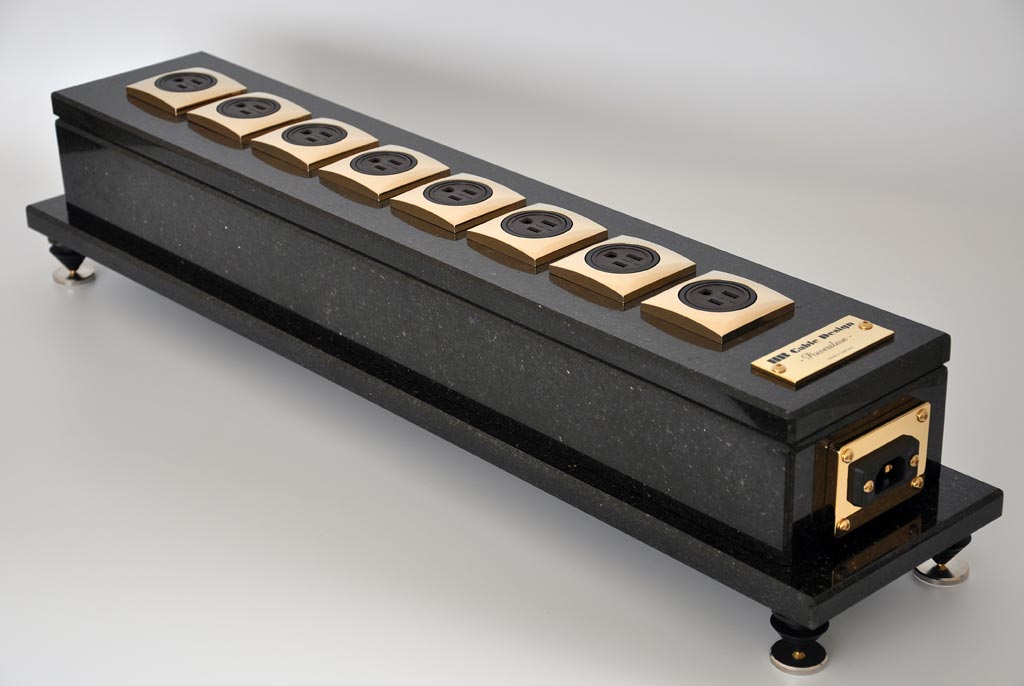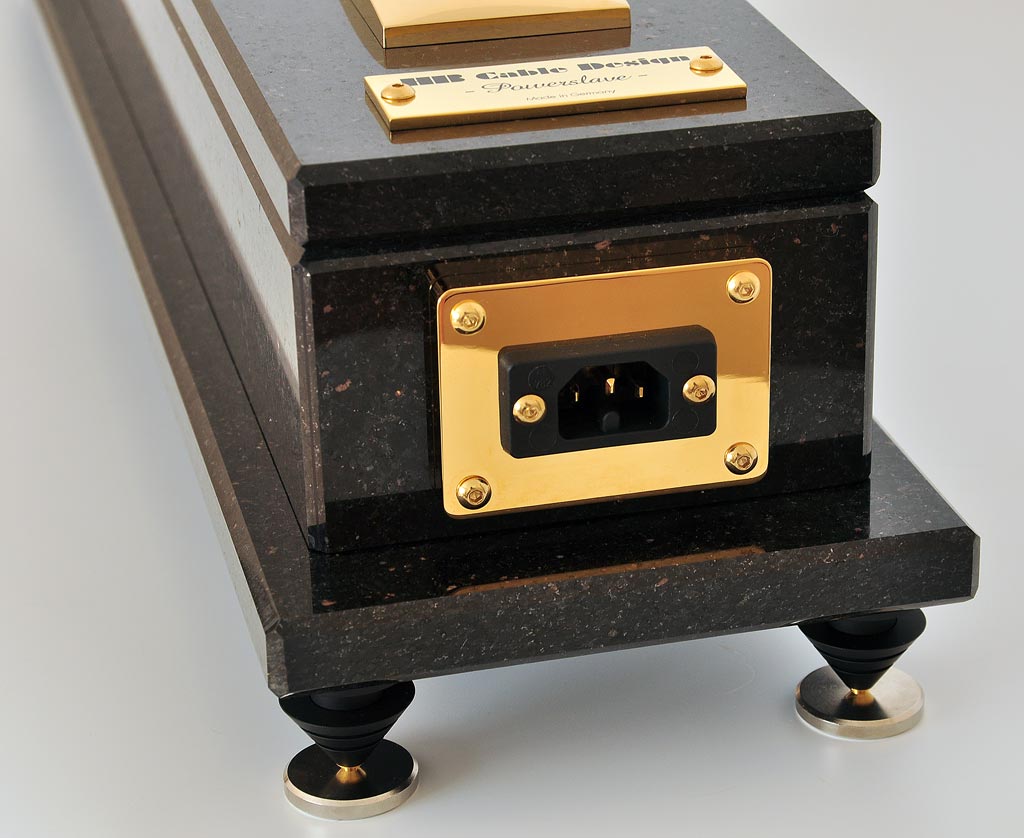I’ll start this review with two confessions. First, when I first saw the HB Cable Design PowerSlave distributors, I thought these have to be the most expensive, best looking power bars I had ever seen. To be honest, they seemed a little ridiculous; I mean there is no traditional kind of power conditioning going on here. There is nothing to help keep the voltage stable; they are simply “power strips on super steroids.” The only reason I was interested in reviewing them was because they were being imported to the U.S. by Brian Ackerman of Aaudio Imports and my experience had taught me that he has quite an ear for finding great sounding gear.
So I agreed to review HB Cable Design’s three passive power distributors, starting with the their entry level PowerStar Horizon ($3,995) which I reviewed in January of this year. I ended that review by saying, “I’ve tried so many power conditioners that I won’t try to list all of them. In the end, I am a firm believer in the KISS (Keep It Simple Stupid) principle when it comes to audio design. Just look at my system, it only has three power cords, and one pair of interconnects plus the tonearm cable. The HB Designs PowerStar Horizon fits right into that principle. I can’t wait to get the Acrylic and the Marble in for a listen.”
Then, in April I reviewed the PowerSlave Acrylic ($6,995) which remained in my system until August when I finally got to hear the PowerSlave Marble, the subject of this review. I ended the review of the Acrylic by saying, “I know this review is short, but it’s simple: this thing works! Brian will be sending the PowerSlave Marble to me; I can’t wait!”
Well, I had to wait a little longer than had been planning to review the reference, PowerSlave Marble. Why? Simple, because they have been selling faster than Brian could get them. This leads me to my second confession: After listening to only two LPs I knew this was the best my system had ever sounded. Since the one I had for review already had a lot of hours of use on it, I didn’t have to deal with break-in. Nothing prepared me for how much and in what ways the HB Marble would improve my system; I was in love with this unit from the very first couple of LPs I listened to with it in my system. Now with that out of the way let’s get on with the review.
Set up
My system is extremely simple, truth is I only have four things to plug in, but two of them are the wall warts for the Soundsmith SG-220 Strain Gauge cartridge system and its preamp. These take up the space of two so it’s really convenient the way the receptacles on the PowerSlave Marble are laid out in a long straight strip instead of being duplex receptacles. I plugged my system in and then I ran an Audience au24 power cable from both the Wavac EC-300B and the AMG V12 turntable to the HB Marble. I also used an AU-24 from the wall to the HB Marble. Since the HB Marble is completely passive there is not any kind of switch or anything to turn on, in today’s vernacular it is truly plug-and-play.
- (Page 1 of 2)
- Next page →



Well, this just more evidence that Jack is in the full grip of audio nervosa. I lived with many true beatnicks, and they all questioned the materialism of the dominant culture. I have heard almost everything out there, all the “new” and “vastly” improved audio components, and, truth be told, the very best of the new systems don’t match the bloody realism of systems based on decades old components. And, yes, those components cost a tiny fraction of the new, improved, and horribly expensive ones. Truth be told, nothing I have heard, either at an audio show, or at an audio store, has matched my humble system, based on the decades old Fulton J speakers and Audio SP 8 preamp and D70 amp. Yes, of course, IMO.
Having owned an SP8 and D70 with Vandersteens at one point and a close friend with Fulton Js all I can say is to each his own. I’ll keep my Lowthers and 300B tubes with a turntable. Still I will admit that this product is much more than over the top.
The Fulton Js sound nothing like the Vandersteens. Of the speakers you have owned (yes, there seem to have been dozens), the only ones that came even close to my Fultons are the Quad 57 and the Teresonic. Yes, those two only come close to my mighty AND accurate Fultons in the midrange at moderate volume. Yes, of course, IMO.
Well your comment about my having owned dozens of speaker got me thinking. In the order I can remember here’s the list. I bought the KLH17S when I was 17, that would be 42 years ago. I owned the Quads the longest. And I have owned the Teresonics for over five years ago. As you can see it doesn’t come close to dozens and it spread over a 40 year period of time. I have been in the industry in a part time way since I was 17 when I cleaned a shop for the privileged of buying at discounted prices. Over that time I have had lots of speakers in my home for audition and I have reviewed a lot also. Anyway here’s the list, hope I didn’t leave out any.
KLH 17s
Double Advents
Quad 57s
Lin Kans in a second system
Vandersteens in a second system
Spica Angeles in a second system
Clestion SL700s
Klipsch Fortes in a video system
Audio Note AN-Es
Ikonoklast HO-3s
Teresonic Ingenium and their Magus in my second system.
Any outlet strip that uses enough copper to create a valid bus bar, like electronics of old before the age of circuit boards and chassis grounds will help out your system simply because the reference voltages will line-up better. The trick then is to compare devices in this category to see how they scale with price.